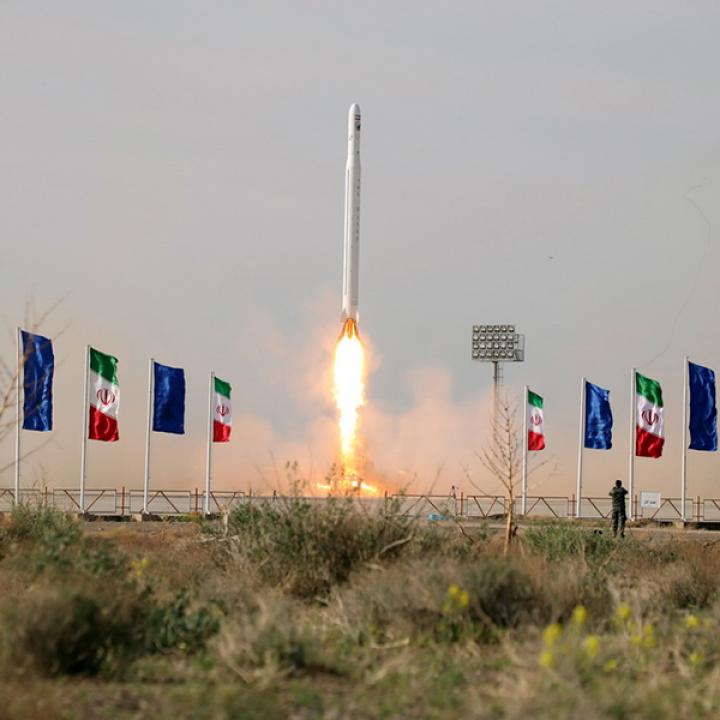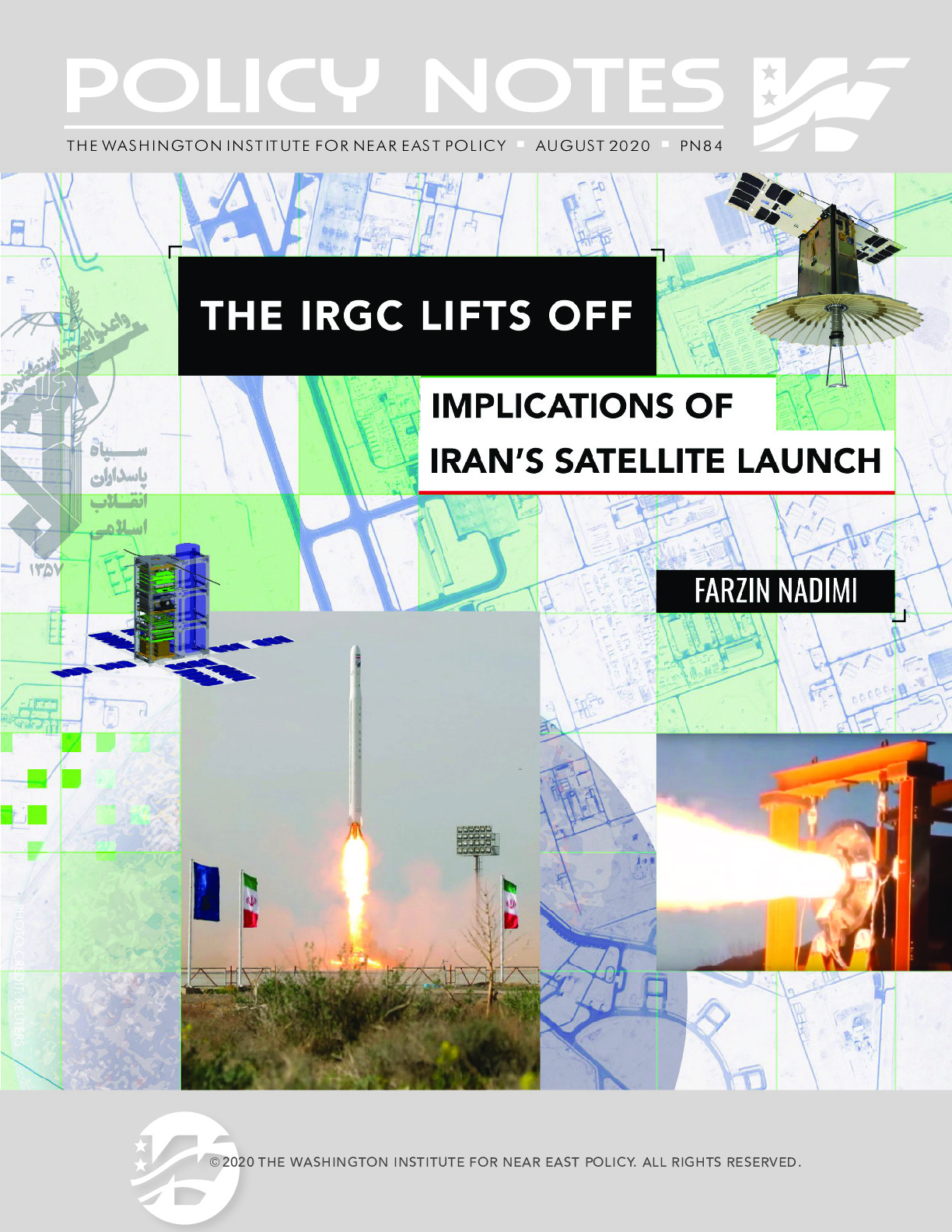
- Policy Analysis
- Policy Notes 84
The IRGC Lifts Off: Implications of Iran's Satellite Launch

In April 2020, the IRGC launched its first domestically made satellite, the Nour-1, into orbit. The launch showed the risks of lifting arms restrictions on Iran, a move supported by potential weapons trade partners Russia and China but vehemently opposed by the United States. Ending the embargo could facilitate Tehran’s unhindered access to dual-use materials employed to produce satellites with military or even terrorist applications. The launch also showcased an expanding IRGC solid-fuel capability that, together with other technologies, could transform Iran’s future ballistic missile designs.
In this Policy Note, military expert Farzin Nadimi explores the consequences of the regime’s latest space achievement. The study’s rich technical detail—on missile types, motors, and “tumbling webcams” known as CubeSats—is complemented by images and framed in a strategic context. The United States and its partners, the author concludes, must respond to these advances by curtailing Tehran’s access to relevant technologies and preventing it from using space initiatives as a cover for illicit military activity.
THE AUTHOR
Farzin Nadimi is an associate fellow with The Washington Institute specializing in the security and defense affairs of Iran and the Persian Gulf region. His study Iran’s Evolving Approach to Asymmetric Naval Warfare was published in April 2020.




